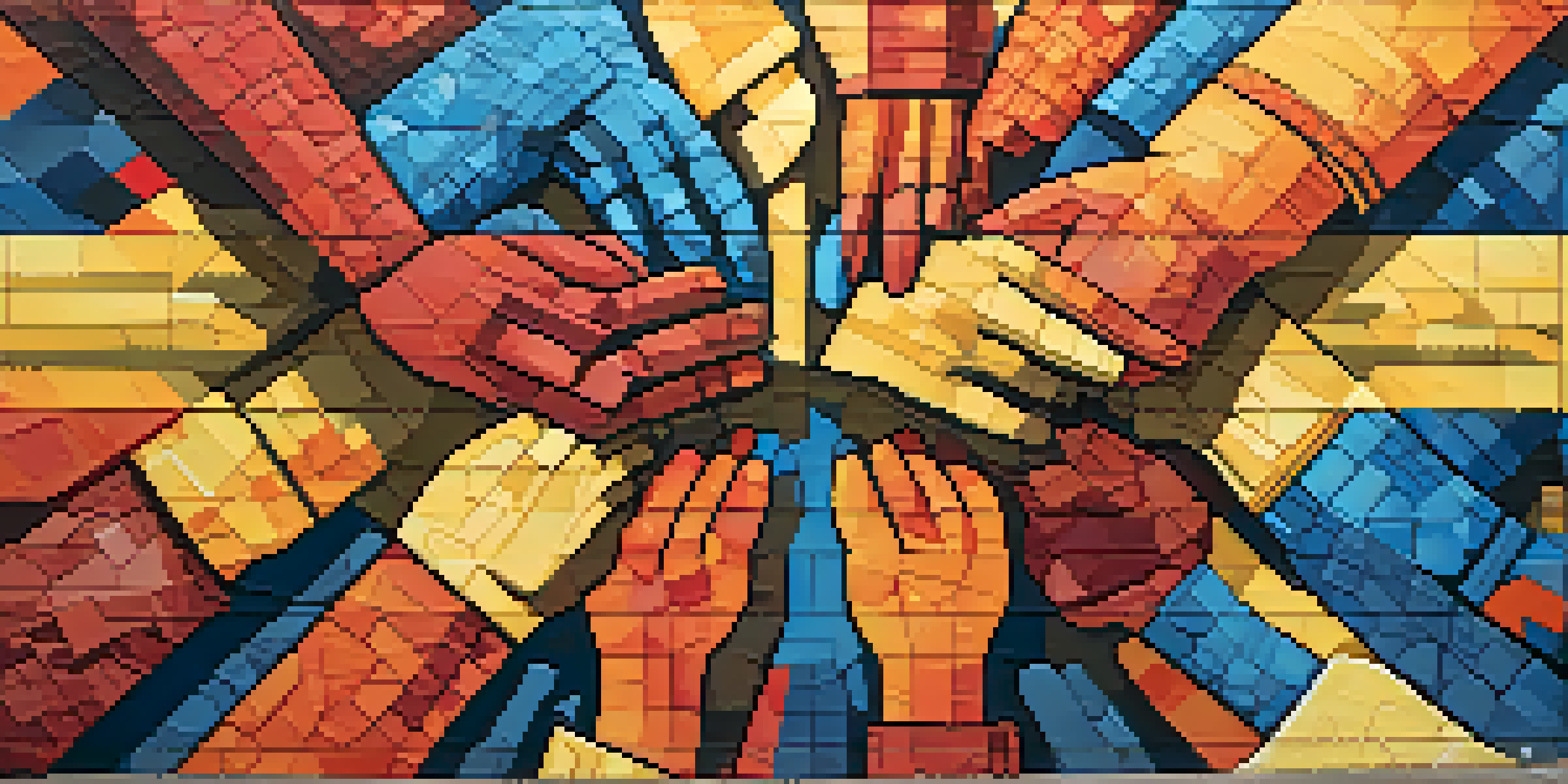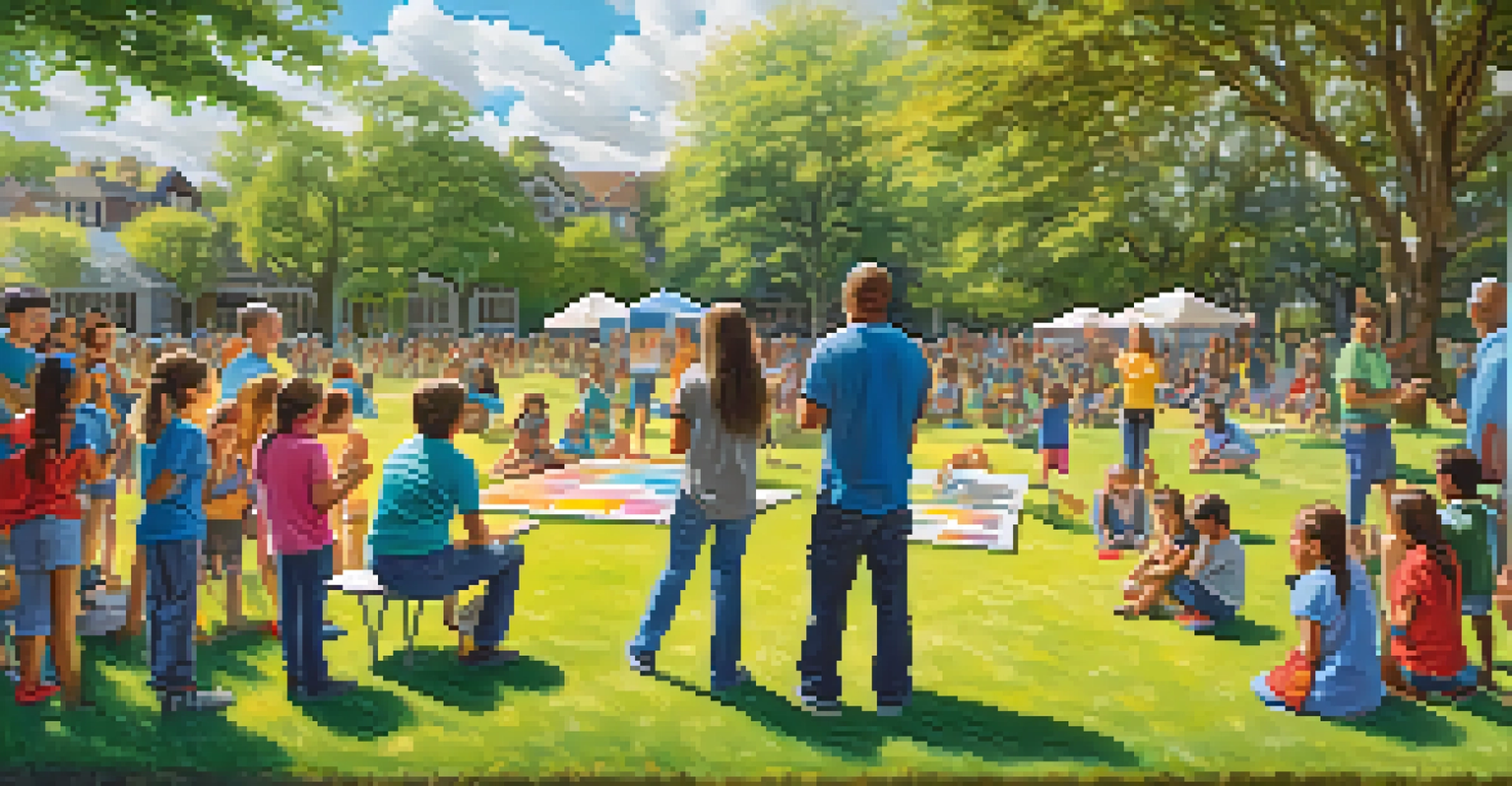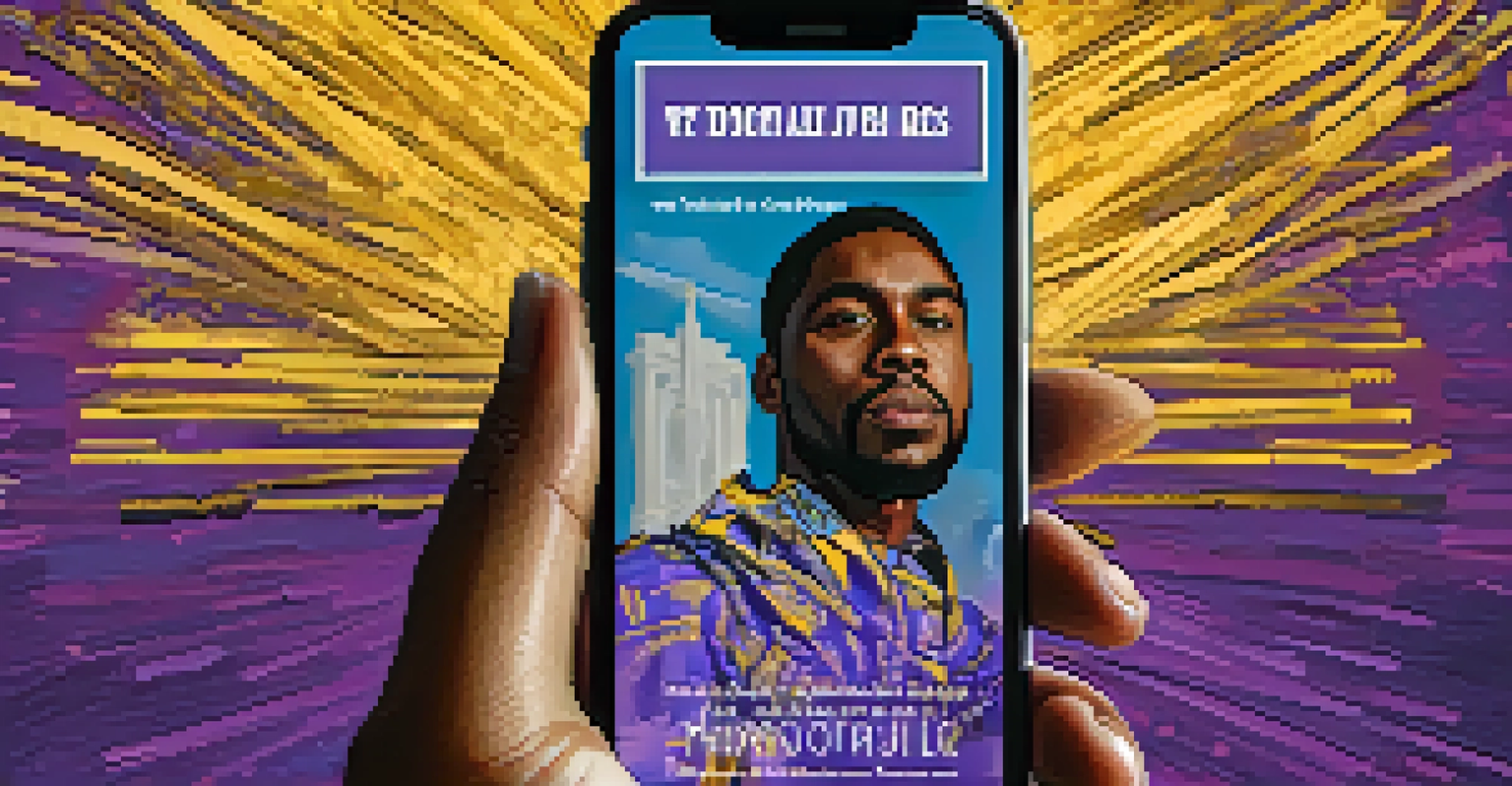Social Justice and Art: Voices of the 21st Century

Understanding Social Justice in the Modern Context
Social justice is more than just a buzzword; it's a movement aimed at creating a fair society where everyone has equal rights. In the 21st century, it encompasses a variety of issues, including racial equality, gender rights, and economic disparity. Artists have become powerful advocates for these causes, using their platforms to highlight injustices and inspire change.
Art is not freedom from discipline, but disciplined freedom.
In our interconnected world, social media amplifies these messages, allowing artists to reach global audiences. This has led to a new wave of activism where art serves not only as a form of expression but also as a catalyst for dialogue and action. As artists share their work online, they invite viewers to engage with societal issues in a more meaningful way.
Related Resource
Ultimately, understanding social justice today involves recognizing the role of art as a vehicle for advocacy. Artists are not just creators; they are storytellers who challenge the status quo, pushing audiences to rethink their perspectives on social issues. This sets the stage for a deeper exploration of how art and activism intertwine in contemporary society.
Art as a Reflection of Social Movements
Art has always mirrored the society in which it exists, acting as a reflection of cultural and political climates. In recent years, we’ve seen powerful artworks emerge from movements like Black Lives Matter and #MeToo, capturing the spirit of change and resistance. These movements have inspired artists to create pieces that speak directly to their experiences and frustrations.

For instance, murals have become a popular form of street art, often highlighting social issues and giving a voice to marginalized communities. These vibrant displays not only beautify urban environments but also serve as poignant reminders of ongoing struggles for justice. They transform public spaces into platforms for activism, making art accessible to everyone.
Art Amplifies Social Justice Voices
Artists use their platforms to highlight injustices and inspire change, making art a powerful vehicle for advocacy.
Moreover, the emotional weight of these artworks can galvanize audiences, prompting them to reflect on their roles within societal structures. By engaging with these pieces, viewers are encouraged to confront uncomfortable truths about inequality and injustice. This interplay between art and activism is crucial in fostering a collective consciousness about social issues.
Digital Art: A New Frontier for Activism
The digital age has transformed how we create and consume art, providing new avenues for activism. Artists are leveraging platforms like Instagram and TikTok to share their work, often reaching audiences that traditional galleries might not capture. This democratization of art allows for diverse voices to emerge and challenge prevailing narratives.
The role of the artist is to make the revolution irresistible.
Digital art can take many forms, from memes to animated videos, making it accessible and relatable. For example, a single viral post can spark conversations and mobilize support for various causes. This immediacy enables artists to respond quickly to current events, ensuring their messages remain relevant and impactful.
Related Resource
As a result, digital art has become an essential tool in the fight for social justice. It breaks down barriers to entry and invites participation from anyone with a smartphone. This shift not only broadens the scope of artistic expression but also enriches the dialogue surrounding critical social issues.
The Role of Art Institutions in Promoting Justice
Art institutions, such as galleries and museums, play a pivotal role in shaping public discourse around social justice. By curating exhibitions that focus on marginalized voices and social issues, they can elevate important conversations and foster community engagement. Their influence can help validate the work of artists who tackle tough societal topics.
Furthermore, many institutions are now reevaluating their collections and practices to be more inclusive and representative. This shift reflects a broader commitment to social responsibility, allowing art to function as a tool for education and awareness. By providing platforms for underrepresented artists, they help amplify voices that have historically been silenced.
Digital Art Broadens Activism Reach
The rise of digital art enables diverse voices to challenge narratives and mobilize support for various social justice causes.
Ultimately, the involvement of art institutions in social justice movements signifies a growing recognition of their societal impact. They can bridge the gap between art and activism, bringing attention to urgent issues while inspiring audiences to take action. This partnership is crucial in creating a more equitable and just society.
Storytelling Through Art: Personal Narratives Matter
Art is often a medium for storytelling, allowing individuals to share their personal experiences and perspectives. This is particularly significant in the context of social justice, where personal narratives can illuminate broader societal issues. By telling their stories, artists connect with audiences on an emotional level, fostering empathy and understanding.
For example, many contemporary artists draw upon their cultural heritage or lived experiences to create compelling works that resonate with their communities. These narratives often challenge stereotypes and misconceptions, inviting viewers to engage with the complexities of identity and social issues. This storytelling aspect helps humanize the struggles faced by marginalized groups.
Related Resource
Moreover, personal narratives in art can inspire collective action, as they highlight shared experiences and foster solidarity among diverse groups. By creating space for these voices, art becomes a powerful tool for advocacy, encouraging audiences to take a stand against injustice. This underscores the importance of representation in the arts, as it can significantly impact societal change.
Collaborative Art Projects: Building Community Through Creativity
Collaborative art projects have emerged as a powerful way to unite communities around social justice initiatives. These projects often involve artists working alongside community members to address local issues, fostering a sense of ownership and participation. This collaborative approach not only enhances the artistic process but also strengthens community bonds.
For instance, community murals can serve as a collective expression of shared values and aspirations. When individuals come together to create something beautiful, it cultivates pride and empowers them to advocate for change. These projects can also raise awareness about pressing social issues, turning public spaces into sites of activism.
Community Projects Foster Unity
Collaborative art initiatives unite communities around social justice, empowering individuals to advocate for change together.
Ultimately, collaborative art projects demonstrate that creativity can be a unifying force. By engaging diverse voices and perspectives, these initiatives highlight the importance of inclusivity in the fight for social justice. They remind us that art can be a communal effort, where everyone has a role to play in shaping a more just society.
The Future of Art and Social Justice: A Call to Action
As we look toward the future, the intersection of art and social justice will continue to evolve. Artists will undoubtedly find new ways to express their messages and engage with audiences, driven by the need for change. This ongoing dialogue is essential for creating a culture that values equity and justice for all.
However, it’s not just the responsibility of artists; everyone has a role to play in this movement. By supporting socially conscious art and engaging with the issues it raises, individuals can contribute to broader societal change. Whether through attending exhibitions, sharing art online, or participating in community projects, every action counts.

In conclusion, the relationship between social justice and art is a dynamic and powerful force in the 21st century. As we embrace this connection, we can foster a more inclusive and equitable future. It’s time to recognize the potential of art not just as a form of expression, but as a vital tool for activism and social change.